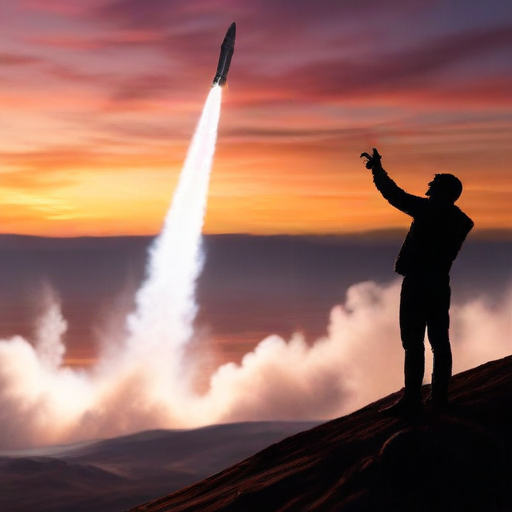SpaceX achieved a significant milestone with the sixth test flight of its Starship vehicle on November 19, despite encountering a setback during the landing of its Super Heavy booster. The launch took place at 5 p.m. Eastern from the SpaceX Starbase in Boca Chica, Texas, starting within a scheduled 30-minute launch window without any reported issues.
Among the spectators was President-elect Donald Trump, a strong supporter of SpaceX and its CEO Elon Musk. The vehicle successfully launched, with the Super Heavy booster, labeled Booster 13, detaching from the Starship upper stage approximately 2 minutes and 45 seconds after liftoff. However, shortly thereafter, mission controllers instructed a “booster offshore divert,” indicating that the booster would not return to the launchpad as planned. The exact reason for this diversion was not disclosed by SpaceX.
The booster ultimately made a controlled landing in the Gulf of Mexico, just offshore, but tipped over and exploded shortly after. While this represented a minor setback compared to the successful recovery of the booster during the previous launch, the mission still marked progress, as the booster was instrumental in placing the Starship upper stage – referred to as Ship 31 – onto a suborbital trajectory.
Throughout its flight, SpaceX reignited one of Ship 31’s Raptor engines as part of testing capabilities needed for future deorbit burns. The vehicle then reentered the atmosphere over the Indian Ocean, undergoing intentionally challenging maneuvers designed to test the limits of its control systems. Kate Tice, one of the SpaceX webcast hosts, noted that they anticipated possible issues during the descent due to these testing parameters.
Despite some damage observed on one of the reentry flaps and parts of the thermal protection system, Starship achieved a powered soft landing in the ocean 65 minutes and 30 seconds after launch, providing a dramatic splashdown in daylight that allowed for enhanced video coverage of the event.
Looking toward the future, SpaceX plans to incorporate several upgrades into the next version of the Starship upper stage, including larger propellant tanks, which will enable an increase in payload capacity from 1,200 to 1,500 tons. Adjustments to the design of the forward flaps are also intended to improve thermal protection during reentry. While no specific timeline for future launches was provided, the company noted that the seamless transition from the previous flight to this one was possible without major alterations to its FAA launch license.
Overall, while challenges persist, SpaceX’s ongoing development of the Starship vehicle reflects the company’s commitment to overcoming obstacles and pushing the boundaries of space exploration. Each test brings valuable insights and advances their goal of creating a fully reusable spacecraft that can support missions beyond Earth.
